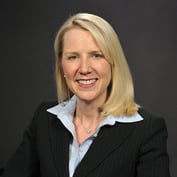In last year’s annual letter to their shareholders, the managers of Dodge & Cox Stock’s $54.6 billion stock fund wrote that outperforming the S&P 500 in the current market would be a “real challenge.”
Sure, the Stock Fund (DODGX) underperformed the S&P in 2007, but one bad year can’t harm a product that commands this much respect. Indeed, investors in the fund are more likely to consider its 20-year positive track record, its close watch on expenses, the solid reputation of its managers–widely acknowledged to be among the best value investors in the market by their peers and independent advisors–and its tried-and-true investment approach of analyzing company fundamentals in relationship to stock valuations over a three- to five-year horizon, than the returns for one year.
There’s little doubt that the popularity of the Dodge & Cox stock fund, which after being closed to new investors since 2004 reopened in February, is as strong as ever. Despite the challenges they might present, current market conditions will not deter the fund’s management team, particularly chairman and CEO John A. Gunn; chief investment officer Charles F. Pohl, and director of research C. Bryan Cameron, from doing what they have always done.
Part of what the nine-member Investment Policy Committee team (see sidebar) has always done is to act a bit like a close-knit but slightly unruly family where disagreements are tolerated, if not encouraged, before the ranks close and a consensus is reached on the equities that will find a (usually long-term) home in the Stock portfolio. To be sure, the team believes that the current market volatility has shaken out many interesting and potentially lucrative investment opportunities from the value tree. But finding the right ones takes both time and discipline, and if investors choose to believe in the Dodge & Cox way, then they must have patience and a long-term view toward investing.
We spoke by telephone in late April 2008 with Gunn, Pohl, and Cameron.
You recently reopened the stock fund. Why now?
Gunn: After continually outperforming for about seven and a quarter years, we began underperforming at the end of 2007, and we saw a lot of money going out of the portfolio. There was a certain class of people that were discouraged by our short-term results, but at the same time, we knew there were a lot of other people–financial advisors and the like–who really wanted to utilize our fund. So looking at the situation over all, we decided it was best to open up the portfolio so that we could balance the contrarians (those who wanted to buy us even when we were down) with those who felt discouraged and were taking their money out. Since we’ve reopened the fund, things have basically stabilized, and the money coming in is now balancing the money going out. We believe there is capacity to accommodate reasonable growth into the foreseeable future.
Why do you think people want to come into the stock fund at this time, when the markets are in such turmoil?
Pohl: Well, we have an excellent track record and reputation as long-term equity managers and advisors, more so than retail investors, and like to focus on long-term results. In 2004 when we closed the fund, we decided not to let advisors add new clients, but we found out that was difficult for them, and many wanted us to change our policy. The basic story of the firm is intact despite our recent underperformance and it’s the same story people have bought into for years, which is why we don’t have to do any hand-holding for new investors coming in. Now, because of the volatility, we are getting a lot more questions than we used to, but people are also coming to us because they view this as a chance to come into the market at a time when it’s offering a lot more opportunities than it did a year ago.
What exactly are those opportunities and how will you be taking advantage of them?








 June 01, 2008 at 04:00 AM
June 01, 2008 at 04:00 AM











